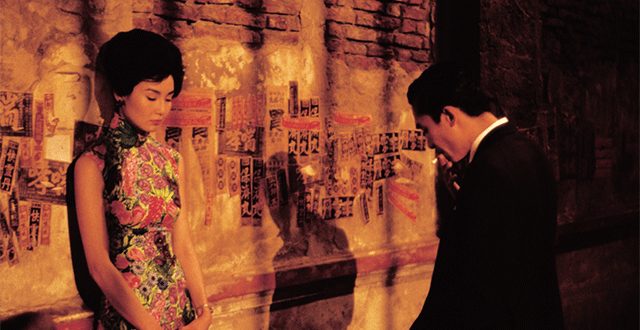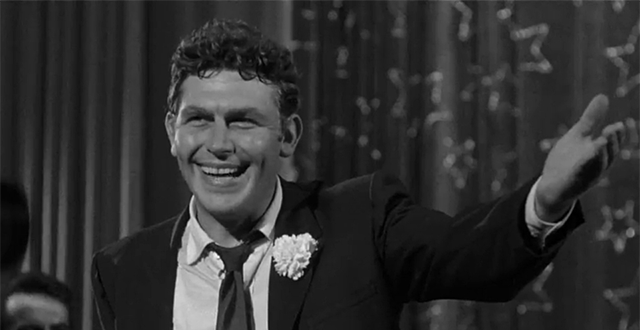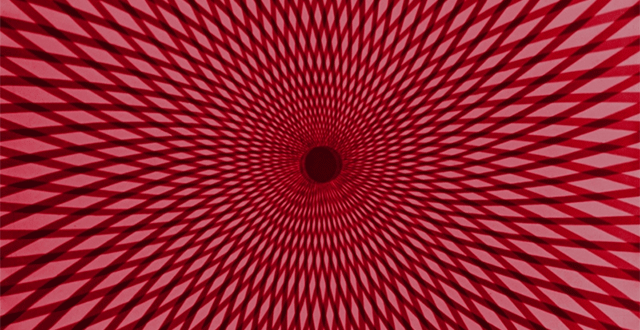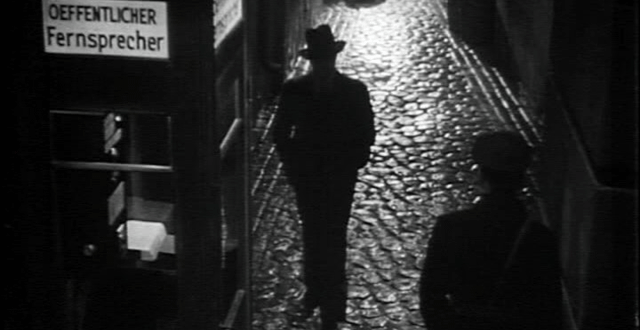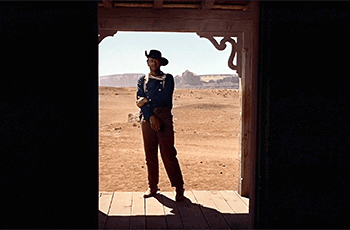News
Cannes Classics 2020
For the 17th consecutive year, here is the program of the classic cinema section of the Cannes Festival. Restored prints, celebrations and documentaries will be programmed.
Since the beginning of the 2000s, when we were still unaware that the relation of contemporary cinema to its own memory would be shaken up by the emerging appearance of digital technology, the Festival de Cannes created Cannes Classics, a selection allowing to display the work of valorization of heritage cinema carried out by production companies, right-owners, cinematheques or national archives from around the world. Now an an essential component of the Official Selection, in a dimension to the history of cinema from which many international festivals have got inspired from, Cannes Classics presents the masterpieces and rarities of the history of cinema in restored copies.
Because the Festival de Cannes also provides itself with the means of achieving the mission of enchanting the relationship of today's audience with the memory of cinema, Cannes Classics sets the prestige of the biggest festival in the world at the service of rediscovered cinema, accompanying all the new exploitations of great works from the past: theatrical releases, DVDs / Blu-rays, distribution on platforms or on VOD.
The program of Cannes Classics 2020 edition consists of twenty-five feature films and seven documentaries. Since the Festival de Cannes did not take place, Cannes Classics 2020 will be hosted, in whole or in part, by the festival Lumière in Lyon (October 10-18, 2020) and by the Rencontres Cinématographiques de Cannes (November, 23-26, 2020).
The 2020 program
In the Mood for love by Wong Kar-wai twenty years after, À Bout de souffle and L’Avventura turn 60, great filmmakers (Wim Wenders, Federico Fellini, Bertrand Blier, Pier Paolo Pasolini, Glauber Rocha, Lino Brocka), Tilda Swinton's first major role in a science fiction film, Muhammad Ali meets William Klein, rediscoveries from the Festival de Cannes ‘60, ‘68, ‘73 and ’81, the first color fiction of Chinese cinema, an unknown masterpiece from Sri Lanka, a Serbian comedy, the new wave of Russian cinema, from yesterday's cinema to today's world with the first film by Melvin Van Peebles and a stricking documentary on women from Brittany, a landmark film about Charlie Chaplin, an exceptional portrait of actor John Belushi, Bruce Lee revisited and a celebration to great Italian actress Alida Valli, here is Cannes Classics 2020.
In the Mood for Love (2000, 1h38, Hong Kong) by Wong Kar-wai
The 4k restoration of the film made from the original negative was lead by Criterion and L'Immagine Ritrovata under the supervision of Wong Kar-wai. In the Mood for Love, by Hong Kong director Wong Kar-wai, made its lead actor Tony Leung win the Male Interpretation Prize.
French theatrical distribution: La Rabbia, date of release: December 2, 2020.
Actress Tilda Switon in her first big screen role to pay tribute to film director and film theorist Peter Wollen. It will be the rediscovery of a rare work.
Friendship's Death (1987, 1h12, United Kingdom) by Peter Wollen
Presented by the British Film Institute (BFI). The 4K remastering by the BFI National Archive was from the original Standard 16mm colour negative. The soundtrack was digitised directly from the original 35mm final mix magnetic master track. The remastering was undertaken in collaboration with the film's producer, Rebecca O'Brien and cinematographer, Witold Stok.
The Story of a Three-Day Pass (La Permission) (1967, 1h27, France) by Melvin Van Peebles
Presented by IndieCollect and the Hollywood Foreign Press Association. The restoration of The Story of a Three-Day Pass (La Permission) was funded by a grant from the Hollywood Foreign Press Association. The original film elements were found by the IndieCollect team during its inventory of Melvin Van Peebles’ New York apartment and storage facility. To create the restoration, the IndieCollect team used a 5K Kinetta Archival Scanner to digitally capture the 35mm Interpositive of the American version and combined it with elements scanned from the French version. Color grading and restoration were completed in-house by Oskar Miarka, and the titles were recreated by Cameron Haffner. Sandra Schulberg translated the French dialogue and new English subtitles were created.
Iyulskiy dozhd (July Rain / Pluie de juillet) (1966, 1h48, Russia) by Marlen Khutsiev
Presented by Mosfilm Cinema Concern. Source material: negative. 4K digital restoration. Restored by: Mosfilm Cinema Concern. Producer of restoration: Karen Shakhnazarov. Year of restoration: 2020.
Quand les femmes ont pris la colère (1977, 1h15, France) by Soizick Chappedelaine and René Vautier
Presented by Ciaofilm. The film was scanned in 4K and restored in 2K from the original 16mm negative. Image works carried out by ECLAIR Classics and by L.E.DIAPASON for the sound under the supervision of Moïra Chappedelaine-Vautier with the support of the CNC, the Cinémathèque de Bretagne and the Région Bretagne.
French theatrical distribution in 2021. DVD / Blu-ray release by Les Mutins de Pangée and in VOD on Cinémutins in 2021.
Préparez vos mouchoirs (Get Out Your Handkerchiefs) (1977, 1h50, France) by Bertrand Blier
Presented by TF1 Studio and Orange Studio / CAPAC. 4K Restoration from the picture negative and the French magnetic soud track, supervised by Bertrand Blier. Digital works carried out by Eclair laboratory in 2019.
Hester Street (1973, 1h30, USA) by Joan Micklin Silver
Presented by Cohen Film Collection. The primary source element for the restoration of Hester Street was the original 35mm camera negative. Brief sections of duplicate negative, in particular the opening title sequence with burned in titles, were cut into the original negative in order to produce the original release prints. 4K scanning and restoration work was carried out by DuArt Media Services in New York.
Ko to tamo peva ? (Who’s Singing Over There? / Qui chante là-bas ?) (1980, 1h26, Serbia) by Slobodan Šijan
Presented by Malavida Films. Restoration from the picture and sound negative. Scanning: Arriscan. Supervision: Slobodan Šijan with Milorad Glusica. Sound restored by Aleksandar Stojsin.
French theatrical distribution: Malavida Films, date of release : October 21, 2020. Restoration made by Jugoslovenska Kinoteka (Yugoslav Film Archive) and produced by CENTAR FILM, Belgrade.
Prae dum (Black Silk) (1961, 1h58, Thailand) by R.D. Pestonji
Presented by Film Archive Thailand (Public Organization). 4K Scan and 4K Restoration from the original 35mm negative (preserved by Film Archive Thailand). Restoration made and financed by Film Archive Thailand and Thai Ministry of Culture. Mastered in 4K for Digital Projection.
Zhu Fu (New Year Sacrifice) (1956, 1h40, China) by Hu Sang
Presented by Shanghai International Film Festival and China Film Archive. 4K Scan and 4K Digital Restoration from the original 35mm image negative and sound negative (preserved by China Film Archive). Restoration made by China Film Archive. Co-financed by Shanghai International Film Festival and Jaeger-LeCoultre. Mastered in 4K for Digital Projection.
Feldobott kő (Upthrown Stone / La Pierre lancée) (1968, 1h25, Hungary) by Sándor Sára
Presented by National Film Institute – Film Archive - Hongrie.
The 4K digital restoration was carried out as part of ‘The long-term restoration program of Hungarian film heritage” of the National Film Institute – Film Archive. The restoration was made using the original image and sound negatives by the National Film Institute - Filmlab. The Digital grading was supervised by Sándor Sára. Collaborating partner: Hungarian Society of Cinematographers.
Neige (1981, 1h30, France) by Juliet Berto and Jean-Henri Roger
Presented by JHR Films. First 4k digital restoration submitted by JHR Films with the support of the CNC et de l’image animée. The restoration was carried out at L’Image Retrouvée laboratory in Bologna and in Paris.
French theatrical distribution: JHR Films, date of release: spring 2021.
Bambaru Avith (The Wasps Are Here) (1978, 2h, Sri Lanka) by Dharmasena Pathiraja
Presented by Asian Film Archive. 4K film and sound restoration was carried out by L'Immagine Ritrovata using the sole-surviving 35mm film positive. The raw and restored 4K scans, a new 35mm picture and sound negatives, and a new positive print of the restored version of the film have been produced and are preserved by the Asian Film Archive.
Bayanko: Kapit sa patalim (Bayan Ko) (1984, 1h48, Philippines / France) by Lino Brocka
Presented by Le Chat qui fume. First 4k digital restoration submitted by Le Chat qui fume. Scanning made at VDM laboratory and restoration carried out by Le Chat qui fume in Paris.
French theatrical distribution and Blu-ray / UHD release: Le Chat qui fume, date of release: February 2021.
La Poupée (1962, 1h34, France) by Jacques Baratier
Presented by the CNC. Sound and image digital work of restoration executed by the CNC and carried out by Hiventy. Follow-up by the CNC and supervised by Diane Baratier. Digital restoration made from 4K scans of the original negative. A 35mm print from the digital restoration was released. French distribution: Tamasa Distribution.
Sanatorium pod klepsydra (The Hourglass Sanatory / La Clepsydre) (1973, 2h04, Poland) by Wojciech J. Has
Presented by Polish Film Classics. 4k Scan and 2K restoration carried out by DI Factory and the reKino team by keeping the guidelines of DOP Witold Sobociński (this restoration is dedicated to him) who could eventually achieve the image he wished to obtain in 1973. Artistic supervision: cinematographer Piotr Sobociński Jr. Right-owners: WFDiF.
French Blu-ray release: Malavida Films, date of release: May 2021.
&
L’Amérique insolite (America as Seen by a Frenchman) (1959, 1h30, France) by François Reichenbach
Presented by Les Films du jeudi. Restoration carried out at Hiventy: 4K scan – 2K restoration from the original negatives.
Deveti krug (The Ninth Circle / Neuvième cercle) (1960, 1h37, Croatia) by France Štiglic
Digital restoration in 2K presented by Croatian Cinematheque – Croatian State Archives with the support of Croatian Audiovisual Centre. Restoration performed by Ater and Klik Film studios in Zagreb, Croatia.
Muhammad Ali the Greatest (1974, 2h03, France) by William Klein
Presented by Films Paris New York and ARTE. First digital 2K restoration from the original 16mm negative scanned in 4K carried out with the support of the CNC. Image works were carried out by ECLAIR Classics and by L.E.DIAPASON for the sound.
Martin Scorsese’s The Film Foundation celebrate its 30th birthday
Martin Scorsese’s The Film Foundation has strived to preserve the world's cinematographic heritage and has offered us masterpieces, rare films and has supported the preservation and restoration of cinema, ensuring its survival for future generations with passion and fervor since 1990. This year, Pier Paolo Pasolini will be honored and a legendary believed to be lost Iranian film will be presented by The Film Foundation's World Cinema Project.
Accattone (Accatone) (1961, 1h57, Italy) by Pier Paolo Pasolini
Presented by The Film Foundation. Restored by the Cineteca di
Bologna at L’Immagine Ritrovata laboratory and The Film Foundation.
Funding provided by the Hobson/Lucas Family Foundation.
Shatranje bad (The Game Chess of the Wind) (1976, 1h33, Iran) by Mohammad Reza Aslani
Presented by The Film Foundation's World Cinema Project. Restored by Cineteca di Bologna at L'Immagine Ritrovata and The Film
Foundation's World Cinema Project. Funding provided by the Hobson/Lucas Family Foundation.
Federico 100!
From the filmmaker who stepped away from the Competition at the Festival de Cannes after his Palme d'Or in 1960, here is the all newly restored for the occasion film which enabled him to win the Oscar for best foreign film in 1954, along with his first film in a stunning restoration and a furiously original documentary. Federico Fellini will be celebrated in his favorite and a festival close to his heart.
La strada (1956, 1h48, Italy) by Federico Fellini
Presented by The Criterion Collection and The Film Foundation.
Restored in 4K resolution by the Criterion Collection and The Film Foundation at Cineteca di Bologna’s L’Immagine Ritrovata laboratory
from a 35mm dupe negative preserved by Beta Film GmbH. Restoration funding provided by Hollywood Foreign Press Association
Luci del varietà (Les feux du music-hall) (1950, 1h37, Italie) by Alberto Lattuada and Federico Fellini
Presented by Fondazione Cineteca di Bologna. Restored in 4K by Fondazione Cineteca di Bologna at L'Immagine Ritrovata laboratory, with funding provided by Ministero per i beni e le attività culturali e per il turismo. Restoration carried out within the "Fellini 100 Project", promoted by Fondazione Cineteca di Bologna, CSC-Cineteca Nazionale and Istituto Luce-Cinecittà.
Fellini degli Spiriti (Fellini of the Spirits) by Anselma dell’Olio (1h40, Italy / Belgium)
Presented by Mad Entertainment, Rai Cinema and Walking the Dog with Rai Com and Arte. Powerful, close to the reverie dear to director Federico Fellini’s heart, this surprising and original documentary takes us into the whirlwind of the work of this genius through the prism of dreams and minds.
À Bout de souffle and L’Avventura turn 60
À Bout de souffle (Breathless) (1960, 1h29, France) by Jean-Luc Godard
Presented by Studiocanal. 4K scan and restoration by Studiocanal with the help of the CNC from the original cut picture negative and the interpositive from that period. An approved-print by DOP Raoul Coutard produced in 2009 when the previous analog restoration was carried out was used for color grading reference. Sound restoration from the original sound negative. Laboratory: L'Image Retrouvée.
French theatrical distribution: Carlotta Films, date of release: October-November 2020. Video release: collector edition UHD+Blu-ray on November 4, 2020.
L'Avventura (1960, 2h20, Italy / France) by Michelangelo Antonioni
Presented by Cinématographique Lyre and Théâtre du temple. 4K Restoration in its uncut version Cinématographique Lyre company, original coproducer of the film, with the support of the CNC and the Cinémathèque française. Works carried out by the teams of the L’Immagine Ritrovata (Bologna) and Hiventy (Boulogne-Billancourt) laboratories.
French theatrical distribution: Théâtre du temple, date of release: November 2020.
Documentaries 2020
Wim Wenders, Desperado by Eric Friedler and Andreas Frege (2h, Germany)
About Wim Wenders: a rich and captivating journey in a large-scale documentary where many artists (Ry Cooder, Patti Smith, Dennis Hopper) express themselves.
Presented by Studio Hamburg Enterprises.
Alida Valli: In Her Own Words (Alida) by Mimmo Verdesca (1h45, Italy)
Director Mimmo Verdesca paints with great subtlety and great affection the portrait of an Italian actress with an extraordinary destiny and talent: Alida Valli.
Presented by Venicefilm, Kublai Film, Istituto Luce-Cinecittà, Rai Cinema.
Charlie Chaplin, le génie de la liberté (Charlie Chaplin, The Genius of Liberty) by François Aymé and Yves Jeuland, directed by Yves Jeuland (2h25, two parts: 1h05 and 1h20, France)
A definitive documentary with Mathieu’s Amalric narration voice over.
Presented by Kuiv productions in association with Lobster films and France télévisions.
Be Water by Bao Nguyen (1h44, USA)
Bruce Lee: the legend, the martial artist, the actor, the Asian man who conquered the world. Always present in our hearts of moviegoers, the fighter as you have never seen him with archives from his family's personal collection.
Presented by ESPN and Dogwoof. The film was presented as a world premiere at Sundance Film Festival in January 2020.
BELUSHI by R.J. Cutler (1h48, USA)
The Blues Brothers star whose name evokes the American comedy of the late 70s. Without any onscreen speaker, a real inventory of everything that can exist and that we had never seen on John Belushi, an unequaled exploration of the career of this great actor with such crazy energy.
Presented by Passion Pictures Films and Showtime Documentary Films.
Antena da raça by Paloma Rocha and Luís Abramo (1h20, Brazil)
Presented by Paloma Rocha Produções Artísticas e Cinematográficas (Paloma Cinematográfica) and Luba Filmes. In 1979 Glauber Rocha hosts a television program where he begins a real political street fight, going out to be close to the people. The Brazil of yesterday dialogues with the Brazil of today in this remarkable documentary about film history and contemporary Brazil.
Out of the Vaults: “A Face in the Crowd”, 1957
Meher Tatna
A Face in the Crowd was the film Steven Spielberg selected to present at the film restoration event for the HFPA’s 75th-anniversary celebrations at the Egyptian Theater in 2017. At our special screening, he called Elia Kazan’s film “way ahead of its time” in depicting our obsession with celebrity and power “with the nightmare scenario of an Arkansas drifter who turns folk hero who turns demagogue.” He continued: “The HFPA is passionately committed to the preservation of the art of cinema. As a Film Foundation board member and as one of its original founders, I want to express also on behalf of Mr. Scorsese back in New York, how grateful we are.”
Our partner, The Film Foundation, worked with the UCLA Film & Television Archive to restore the film back to its original glory. Extensively damaged sections in the original picture negative were replaced with new dupes made from a 1957 fine-grain master, and the main titles were restored to eliminate unsteadiness. The sound was digitally restored from an original 1957 mixed magnetic track and from a print of the film's original optical track. UCLA and The Film Foundation produced a fully timed 35mm final answer print and 35mm preservation fine-grain master positive. It was preserved in cooperation with Castle Hill Productions from the original 35mm acetate picture and soundtrack negatives and from master magnetic soundtrack materials.
Seen in the current era of celebrity worship, when the concept of fame for being famous and the intertwining of politics and entertainment have produced, among other things, the Trump presidency, Kazan’s film seems extraordinarily prescient. And being ahead of its time perhaps accounts for the fact it was not a huge success when it was released in 1957. After all, no one back then could have envisioned a businessman and reality TV host actually assuming the most powerful political office in the world. Even Kazan would have rejected this scenario for a movie as being too outlandish.
The movie is based on screenwriter Budd Schulberg’s short story Your Arkansas Traveler and is the second collaboration between him and Kazan after 1954’s On the Waterfront which won the Oscar for Best Picture. Patricia Neal plays Marcia Jeffries, a radio journalist who discovers a talented bum in an Arkansas jail and helps him get his own radio show. Andy Griffith, in his film debut, plays Lonesome Rhodes, the guitar-playing hayseed who goes on to such success on the radio that he segues into television and expands his fame and power with his aw-shucks charm and everyman persona. That persona conceals an ignorant but cunning and ambitious opportunist who takes advantage of his enormous influence to endorse a presidential candidate, Senator Worthington Fuller (Marshall Neilan). Fuller rapidly improves his standing with his ultra-rightwing agenda amplified by an increasingly out of control, arrogant Rhodes whom stardom has turned into a monster. When Marcia’s rose-colored glasses finally slip, she engineers Rhodes’ downfall. Anthony Franciosa plays his business manager; Walter Matthau is Marcia’s show writer. Lee Remick, in her screen debut, plays a cheerleader. Kazan filled out the cast with real-life media personalities like Mike Wallace, Bennett Cerf, John Cameron Swayze, Betty Furness, Sam Levenson, Virginia Graham, and Walter Winchell in cameo roles.
The poster for the movie reads breathlessly – “POWER! He loved it! He took it raw in big gulpfuls ... he liked the taste, the way it mixed with the bourbon and the gin in his blood!”
Through the movie, it was Kazan and Schulberg’s aim to critique the media and the public’s lionizing of celebrity and to show how the great unwashed fall for a charlatan’s lies. They particularly warned about unscrupulous persons using the power of television to manipulate the truth and delude the gullible.
In Kazan on Kazan by Michael Ciment, Kazan said of the film: “One of the points we wanted to make with the picture was the fantastic upward mobility in this country, the speed with which a man goes up and down. That we both knew well because we’d both been up and down a few times ... The thing that drove us was our belief in the theme, our anticipation of the power TV would have in the political life of the nation. ‘Listen to what the candidate says,’ we urged. ‘Don't be taken in by his charm or his trust-inspiring personality.’”The Lonesome Rhodes character was based partly on Will Rogers and Arthur Godfrey.
Marlon Brando was offered the principal role and turned it down. Griffith was discovered by Kazan after he heard his comedy monologue records that were broadcast on southern radio to wide popularity. “He was the real native American country boy and that comes over in the picture,” Kazan told Ciment. “I had him drunk all through the last big scene because it was the only way he could be violent – in life he wants to be friends with everybody.”
The Blytheville Courier News of August 8, 1956 talks about the biggest location shoot that took place in Poplar Bluff, Missouri, standing in for the fictional town of Piggott where the county fair and baton-twirling competition scenes were filmed. “Five thousand extras were sought, to be fed and paid $1 hourly for a mid-August day’s work. Sixty baton twirlers and musicians from six different high school bands were rounded up from Arkansas and Missouri. Remick reported spending two weeks in Piggott living with teen twirler Amanda Robinson and her family, working on her twirling and a local accent. Some of her baton-twirling scenes used a double. Some 380 dogs were assembled from Missouri and Arkansas for the scene following Rhodes’s first mass-action call on his audience: to take their dogs to the home of a local sheriff who was running for higher office to find out if a candidate is worthy of the office of dog catcher.”
The film was not that well-received upon release, critics being skeptical that television could have much impact on national politics. (It was only three years later that a sweating Richard Nixon lost a television debate, and the presidency, to John F. Kennedy.) One high-profile champion of the film at the time was François Truffaut who wrote in Cahiers du Cinema: “What is important is not its structure but its unassailable spirit, its power, and what I dare call its necessity. The usual fault with ‘honest’ films is their softness, timidity, and anesthetic neutrality. This film is passionate, exalted, fierce ... a great and beautiful work whose importance transcends the dimensions of a cinema review.”
A Face in the Crowd was selected for preservation in the United States National Film Registry by the Library of Congress as culturally, historically, or aesthetically significant in 2008.
COMMEMORATING 30 YEARS OF TFF
The animator and animation historian John Canemaker has referred to Oskar Fischinger as the Kandinsky of cinema. You could just as well call him its Klee or its Mondrian or its Hilma af Klint. Each of these artists was familiar with “alternative” spiritual disciplines like theosophy, anthroposophy and (in Fischinger’s case) Tibetan Buddhism and Hindu tantric rituals. And I think that they each felt their way to the spiritual through the practice of their art rather than visa versa. In a 1943 letter to his patroness (for a time) Hilla Rebay, one of the co-founders of the Guggenheim Museum, Fischinger wrote that in the late 20s he developed a “rotating cylinder, driven by a motor, day and night, all the time, to hold my denials and affirmations in steady motion-rotation,” only to learn many years later of the “existing parallel thoughts in my continuous rotating cylinders and the thousands-of-years-old [Buddhist] prayer wheel.”
The Film Foundation has helped to facilitate the restorations of four of Fischinger’s greatest paintings-in-motion: the three-screen Raumlichtkunst, finished in 1929 and restored by the Center for Visual Music with the participation of the National Film Preservation Foundation, and three films made after he and his family fled Nazi Germany and emigrated to Los Angeles in 1936, restored by the Academy. Allegretto, synchronized to Ralph Rainger’s piece “Radio Dynamics,” is a matter of staccato rhythms, suggesting the movement of criss-crossing impulses. Radio Dynamics, made in 1942, is silent, also a matter of rhythm but in this case the rhythm of emotions overlapping like waves, fields of color and texture ever expanding and converging, growing and overwhelming and nurturing and displacing one another endlessly. And Fischinger created Motion Painting No. 1 by filming every brushstroke of oil on plexiglass over 9 months: set to Bach’s 3rd Brandenburg Concerto, it’s a remarkable piece of work that keeps expanding in the mind, a constant crossing and re-crossing from outer to inner experience and back again. I could go on in multiple directions on Oskar Fischinger’s films, but I feel compelled to close with this: they could only have been made by hand, painstakingly, with actual paints and boards and animation stands and film, one mind-bending frame at a time.
- Kent Jones
Follow us on Facebook, Instagram, and Twitter!
RAUMLICHTKUNST (1926-29, d. Oskar Fischinger)
Preserved by the Center for Visual Music through the Avant-Garde Masters program funded by The Film Foundation and administered by the National Film Preservation Foundation.
ALLEGRETTO (1936, d. Oskar Fischinger)
Restored by the Academy Film Archive with finding provided by The Film Foundation.
RADIO DYNAMICS (1942, d. Oskar Fischinger)
Restored by the Academy Film Archive with finding provided by The Film Foundation.
MOTION PAINTING NO. 1 (1947, d. Oskar Fischinger)
Restored by the Academy Film Archive with finding provided by The Film Foundation.
COMMEMORATING 30 YEARS OF TFF
So Ends Our Night, directed by John Cromwell, is based on the 1939 novel Flotsam by Erich Maria Remarque. It was shot in 1940 and released by United Artists in early 1941. Like Christian Petzold’s recent Transit, it is about the particular plight of the refugee. What is it like to be stateless, wrenched away from everything familiar, permanently unsettled, and under the constant threat of absolute crushing force? Those are the questions that shadow every moment, every second, every frame. The characters played by Fredric March, Margaret Sullavan, a very young Glenn Ford, Leonid Kinskey (the bartender in a more famous refugee film, Casablanca) and Alexander Granach who meet up along the European trail of displaced persons, the trail taken by Arthur Koestler and Walter Benjamin, warm themselves with the elemental gifts of life: a roast chicken, a bottle of wine, laughter, and each other’s company. And every moment of camaraderie and good cheer is haunted by the memory of home and loved ones lost or scattered. The film builds to an extraordinary passage in which you can really feel the presence of production designer William Cameron Menzies. March’s character returns to Vienna and wants to say a fugitive goodbye to his wife, played by Frances Dee. They take alternate routes to a designated spot, turning corners and making their way through crowds, and the sequence reaches a visual and emotional crescendo as they each get one last look at each other in a breathless succession of close-ups before they part forever.
So Ends Our Night, which was restored by George Eastman House (and now needs further attention), was independently produced by David Loew and Albert Lewin. No major studio would have touched it at the time. Hollywood was painstakingly careful, to a point well beyond moral cowardice and until the last possible moment, to neither offend German audiences nor advocate for American intervention in Europe. Films like Confessions of a Nazi Spy (Warner Brothers) and The Mortal Storm (MGM) were extremely rare exceptions to the rule. So Ends our Night is a courageous film, and it’s sad to think that some of the people who made it would later face the horrors of the Red Scare (March was hounded by HUAC early on and Cromwell was blacklisted through most of the 50s). It’s also a film that moves me deeply because, like The Big Country, it manages a rare feat: to dramatize and truly embody the good in people.
- Kent Jones
Follow us on Facebook, Instagram, and Twitter!
SO ENDS OUR NIGHT (1941, d. John Cromwell)
Preserved by George Eastman Museum with funding provided by The Film Foundation.
THE BIG COUNTRY (1958, d. William Wyler)
Restored by Academy Film Archive with funding provided by The Film Foundation.
